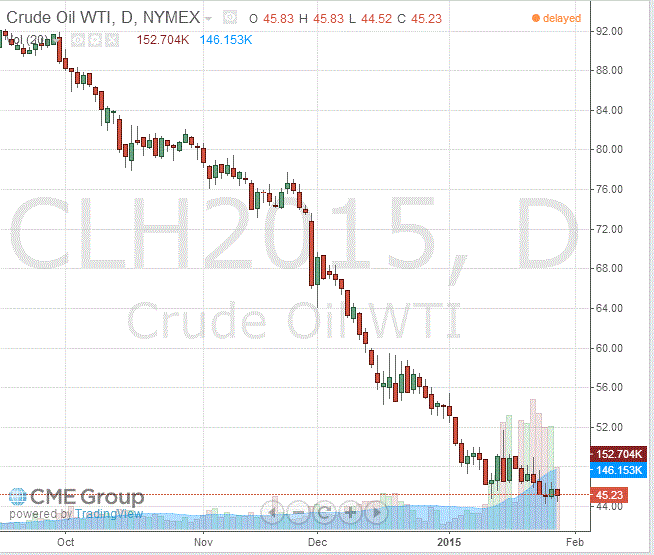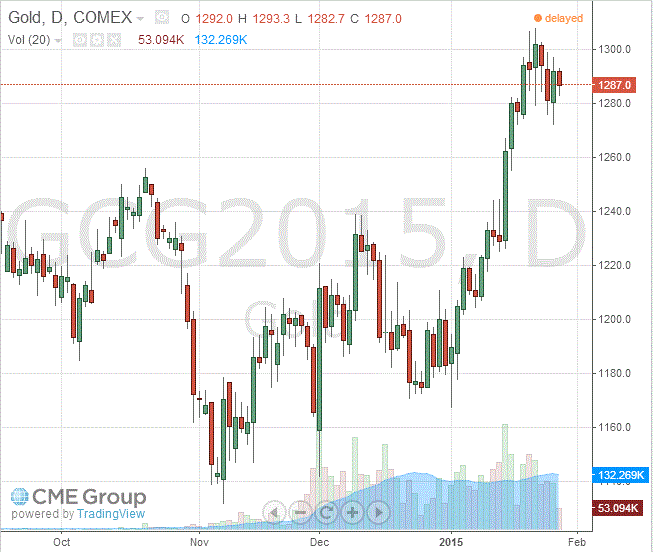Noticias del mercado
-
17:40
Oil: A review of the market situation
Prices for WTI moderately decreased, approaching the level of $ 45 per barrel, which is associated with the release of data on oil reserves in the United States, as well as the strengthening of the US dollar.
US Department of Energy announced that commercial oil stocks rose 8.9 million barrels to 406.7 million barrels, compared to the average forecast of four million. Barrels. The latter value was the highest for the entire period of statistics with the US Department of Energy in August 1982. Meanwhile, gasoline inventories fell 2.6 million barrels to 238.3 million barrels. Analysts had expected growth to 400,000 barrels. Distillate stocks fell by 3.9 million barrels to 132.7 million barrels, while analysts had expected a decline of 1.6 million barrels. Utilization rate of refining capacity rose by 2.5 percentage points to 88%. Analysts expected the growth rate by 0.1 percentage points.
Yesterday the American Petroleum Institute (API) reported that US crude stocks rose by 12.7 million barrels to 405.1 million barrels in the week ended Jan. 23. According to the API, gasoline inventories fell by 5 million barrels, while distillate stocks - by 670,000 barrels. Analysts speculated that oil reserves will rise by 4.1 million barrels, gasoline inventories rise by 300,000 barrels, while distillate inventories decreased by 1.7 million.
The course of trade is also affected by expectations of the outcome of the meeting of the Fed's monetary policy, which is expected to keep the policy rate unchanged. Investors will closely monitor the FOMC statement for indications that interest rates will remain unchanged at near zero for some time to come.
Market participants also drew attention to the updated forecasts for oil prices from Barclays and UBS. «In the next few months, we expect a further decline in prices - the head of Barclays Commodities Research Michael Cohen. - To the extent that Brent, WTI and will be traded just below $ 40 a barrel. After that, the fall can be stopped. "Compared with the December forecast average annual cost of both brands of oil decreased by 1.6 times: by Brent - from $ 72 to $ 44, according to WTI - from $ 66 to $ 42 per barrel.
Meanwhile, UBS expects that this year mark WTI will cost an average of $ 49 per barrel compared with the previous forecast of $ 64.75 per barrel. Evaluation for 2016 decreased to $ 62.5 per barrel from $ 75. The average price of Brent, the expected in 2015 will be $ 52.5 per barrel compared to the previously forecasted $ 69.75 per barrel. 2016 outlook deteriorated to $ 67.5 from $ 80.
March futures price for US light crude oil WTI (Light Sweet Crude Oil) dropped to 45.23 dollars per barrel on the New York Mercantile Exchange.
March futures price for North Sea petroleum mix of Brent increased by $ 0.10 to $ 49.37 a barrel on the London Stock Exchange ICE Futures Europe.
-
17:20
Gold: a review of the market situation
Gold prices fell slightly today, dropping at the same time below $ 1290, which is associated with the expectations of the outcome of the meeting of the Federal Reserve System.
Investors expect the Fed's indication that interest rates will remain unchanged at near zero for some time to come. At the same time, some investors accept a positive impact on the Fed precious metals. "Gold prices may obtain further support on the eve of the statement to be made on the results of the Fed meeting," - analysts say ANZ ..
"In our opinion, the Central Bank will pay special attention to slowing global economic growth and underline the unhurried approach to raising interest rates," - wrote analyst Edward Meir INTL FCStone.
Pressure on gold also has reduced demand of investors in the asset-seekers. "Despite the increased uncertainty in the euro area in connection with the new Greek government, the demand for gold as a safe haven as a whole has not increased," - said Howie Lee, an investment analyst at Phillip Futures.
Little influenced by data from Germany. It is learned that the February consumer confidence index from the German Gfk rose to around 9.3 (up to November 2001). It should be noted that the published value of the index has exceeded analysts' forecasts, which accounted for 9.1. Believe in the GfK, consumers in Germany, apparently acted strong drop in energy prices over the past few weeks. "So, reducing the cost of gasoline and heating oil supports the growth of disposable income and gives consumers more freedom of choice of other expenses and purchases," - noted in the study group.
The cost of the February gold futures on the COMEX today fell to 1287.00 dollars per ounce.
-
12:20
Oil: Prices under pressure ahead of U.S. Crude inventories
Brent crude and West Texas Intermediate are trading lower today ahead of U.S. Crude Oil Inventories due at 15:30 GMT to get an indication on demand from the world's largest consumer of oil. Stockpiles are forecasted having increased by 4.1 million barrels last week. Yesterday the American Petroleum Institute reported that stockpiles increased by 12.7 million barrels.
Brent Crude lost -0.79%, currently trading at USD49.21 a barrel, still below the important USD50 level but getting closer as the U.S. dollar weakened. On January 13th Crude hit a low at USD45.19. West Texas Intermediate declined by -1.73% currently quoted at USD45.43.
Oil prices fell by nearly 60 percent over the past six months, and both key brands of oil are currently trading below $ 50 a barrel as the worldwide supply exceeds demand in a period of low global economic growth and the OPEC refusing to cut output rates to stabilize prices. Smaller OPEC members want to cut production but the organisation, responsible for 40% of worldwide production focuses on its fight for market share.
-
12:00
Gold prices further decline before FED Interest Rate Decision and FOMC statement
Gold is trading lower today as investors remain cautious ahead of much anticipated Interest Rate Decision of the Federal Reserve Bank scheduled for 19:00 GMT. The bank is expected to keep policy on hold. Yesterday gold climbed by almost 1% on mixed U.S. data casting shadows on the economic outlook of the U.S. The wording of the FOMC statement will be closely watched to get further indications on when the FED is going to raise benchmark interest rates from near zero levels. It's the first statement after the SNB's move to scrap the exchange floor for the franc and after the ECB announced quantitative easing.
Gold prices rose nearly 9 percent this year, after declining for two consecutive years, ending 2014 almost flat. Speculations that the FED will hold back its benchmark interest-rate hike till the end of the year further helped gold but the forecast for the current year remains uncertain.
The precious metal is currently quoted at USD1,287.20, -0,46% a troy ounce. On Thursday last week gold reached a five-month high at USD1,307.40.
-
01:04
Commodities. Daily history for Jan 27’2015:
(raw materials / closing price /% change)
Light Crude 45.59 -1.38%
Gold 1,292.30 +0.05%
-


